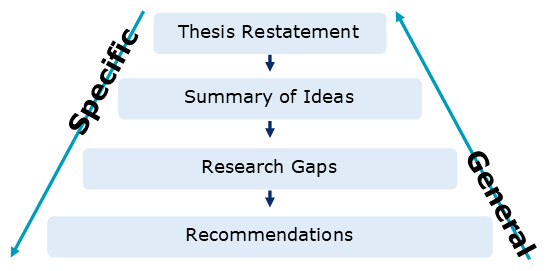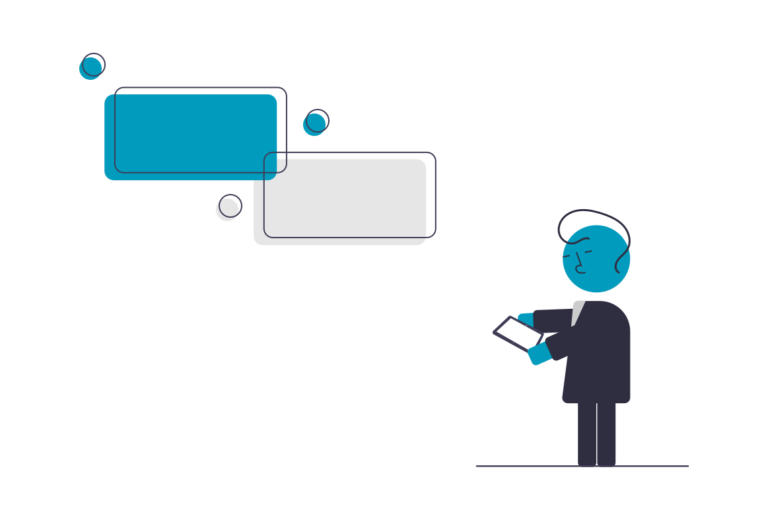What are 10 tips for writing effective conclusions?

This is the third and final chapter about Writing Concluding Paragraphs. To complete this reader, read each chapter carefully and then unlock and complete our materials to check your understanding.
– Provide the reader with 10 tips for writing effective conclusions
– Use real academic examples and diagrams
– Complete activities to check knowledge and comprehension
Before you begin reading...
-
video and audio texts
-
knowledge checks and quizzes
-
skills practices, tasks and assignments
Chapter 3
In this final chapter of our short reader on writing concluding paragraphs, we introduce ten tips for constructing effective final paragraphs. While it might not be possible to always follow every point, the more tips you can tick off, the more chance there is that your reader will agree with your argument – leading to a higher grade. To check your knowledge and comprehension of the ideas described here, don’t forget to unlock and download our Chapter Worksheets. After completing this reader, you might also wish to study similar readers on introductory paragraphs and body sections to complete your essay writing knowledge.

Tip 1: Include the Key Elements
As was introduced in Chapter 1 and explored in detail in Chapter 2, a good writer knows which elements to include and which to leave out. For a conclusion, the mandatory elements are the thesis restatement and the summary of ideas, while the optional ones are research gaps and recommendations. An effective writer should also never forget to finish off their essay in much the same way they started it: with an engaging sentence that leaves the reader feeling glad they committed to reading the paper.
Tip 2: Move from Specific to General
While an introduction generally moves from general to specific, an effective conclusion should do quite the opposite. Students should arrange the elements of their conclusion so that the thesis restatement is the most specific aspect of the paragraph and the final sentence is the most general. While not all conclusions need to be arranged like this, the specific-general structure is a proven formula that’s particularly helpful for less experienced writers:

Tip 3: Avoid New Information
A big no-no that almost every composition tutor agrees with is the inclusion of new information in a conclusion. Generally speaking, a conclusion should only summarise and paraphrase information which has already been presented in the introduction and body section of an essay, albeit from a conclusive perspective. Students should avoid including any new sources or supporting details (examples, evidence, explanation) in their conclusion – unless you wish to confuse your reader or annoy your marker!
Tip 4: Avoid Formulaic Language
While an inexperienced writer may benefit from using stock phrases to begin a conclusion such as ‘In conclusion’, ‘To conclude’ or ‘To sum up’, a more experienced writer generally avoids this type of signposting language. Instead, a good idea would be to include a transitional aspect to your thesis restatement that fluidly moves the reader from the final body paragraph to the concluding paragraph. As soon as the reader recognises they’re reading a thesis restatement or summary of ideas, they’ll know that you are concluding your essay without the use of cliched phrases.
Tip 5: Paraphrase and Summarise
A good writer should always be working to improve their paraphrasing and summarising skills. Particularly during a conclusion, it is critical that you can rephrase what you’ve already said (from a fresh perspective of course) in both your thesis restatement and summary of ideas. Don’t forget though that a conclusion should not simply be a recap. It should be a concise sales pitch that uses rhetorical devices to convince the reader of your argument by reminding them of the main ideas and supporting details explored in the body section. Simply paraphrase and summarise your essay content and you will only be using up a valuable word count.
Tip 6: Be Concise
Because most essays have very limited word counts, concision is also a key skill. Make your conclusion brief, informative and persuasive. Use as few words as you can to reconvey your argument, deleting unnecessary phrases and editing expressions down into more compact noun phrases wherever possible. Concision is a difficult skill, but it’s one that’s absolutely worth mastering.
Tip 7: Be Academic
Students should never forget to avoid unacademic and emotive language in an essay’s conclusion. Remember to include academic language such as cohesive devices and hedging language, and high-frequency words from an academic word list. Making sentimental appeals to your reader is not a good way to convince them and will only lower your grade. Instead, be concise, objective and specific, remaining speculative also in the aspects of your thesis that remain unanswered.

Tip 8: Be Persuasive and Speculative
Striking a balance between speculation and persuasion isn’t easy, but it’s worth working at. After all the groundwork you’ve laid in the introduction and body section, it would be a shame if your conclusion is unable to convince your reader that what they’ve read was a worthwhile intellectual experience. Use rhetorical techniques to pitch your argument to your reader, convincing them of your ideas by pulling together the key information from previous sections into one theme. Ask yourself “so what?” for every main idea or supporting detail you include in this final paragraph, carefully considering whether the reader will consider that information persuasive or not.
At the same time, a good writer should not be too self-confident, otherwise persuasion may be read as inexperience or naivety. Use hedging language to protect your claims and employ research gaps and recommendations to speculate on areas of further research and improvement. Be realistic in any solutions or suggestions you offer and be sure that your key limitations are clear for the reader. Remember that any recommendations you provide are unlikely to make significant changes to the world – as much as you might hope that they will.
Tip 9: Don’t Undermine Your Argument
One common pitfall is that students may undermine their argument by pre-empting possible critiques or apologising for an incomplete investigation. An essay has limited scope, and students are not expected to have found a definite answer to a problem or have reached a complete conclusion to a topic in such a limited word count. Instead, include research gaps in your conclusion to concisely highlight the limitations of your argument, and avoid undermining phrases such as:
- “There is no obvious answer to this issue”
- “Of course, there are convincing arguments from both sides of the debate”
- “This is just one way of looking at this topic among many possibilities”
Tip 10: Edit and Proofread
Finally, always remember to check your essay very carefully for inconsistencies. Ask yourself the following questions before submission:
- Does my conclusion move from specific to general?
- Have I included at least three of the four key elements of a conclusion?
- Do the main ideas I’ve summarised match the main ideas in the body section, and are they in the same order as presented there?
- Have I used academic language accurately? Do I hedge appropriately?
- Are there any spelling or grammar mistakes in my conclusion?
- Could I make my conclusion more concise? Are there any sentences or phrases that could be deleted or rewritten?
To reference this reader:
Academic Marker (2022) Writing Concluding Paragraphs. Available at: https://academicmarker.com/essay-writing/concluding-paragraphs/writing-concluding-paragraphs/ (Accessed: Date Month Year).
Downloadables
Once you’ve completed all three chapters in this short reader Writing Concluding Paragraphs, you might then wish to download our Chapter Worksheets to check your progress or print for your students. These professional PDF worksheets can be easily accessed for only a few Academic Marks.
Chapter 1 explores the topic: What is the purpose of a concluding paragraph? Our Chapter 1 Worksheet (containing guidance, activities and answer keys) can be accessed here at the click of a button.
Chapter 2 explores the topic: Which essay elements build academic conclusions? Our Chapter 2 Worksheet (containing guidance, activities and answer keys) can be accessed here at the click of a button.
Chapter 3 explores the topic: What are 10 tips for writing effective conclusions? Our Chapter 3 Worksheet (containing guidance, activities and answer keys) can be accessed here at the click of a button.
To save yourself 2 Marks, click on the button below to gain unlimited access to all of our Writing Concluding Paragraphs Chapter Worksheets. This All-in-1 Pack includes every chapter, activity and answer key related to this topic in one handy and professional PDF.
Collect Academic Marks
-
100 Marks for joining
-
25 Marks for daily e-learning
-
100-200 for feedback/testimonials
-
100-500 for referring your colleages/friends